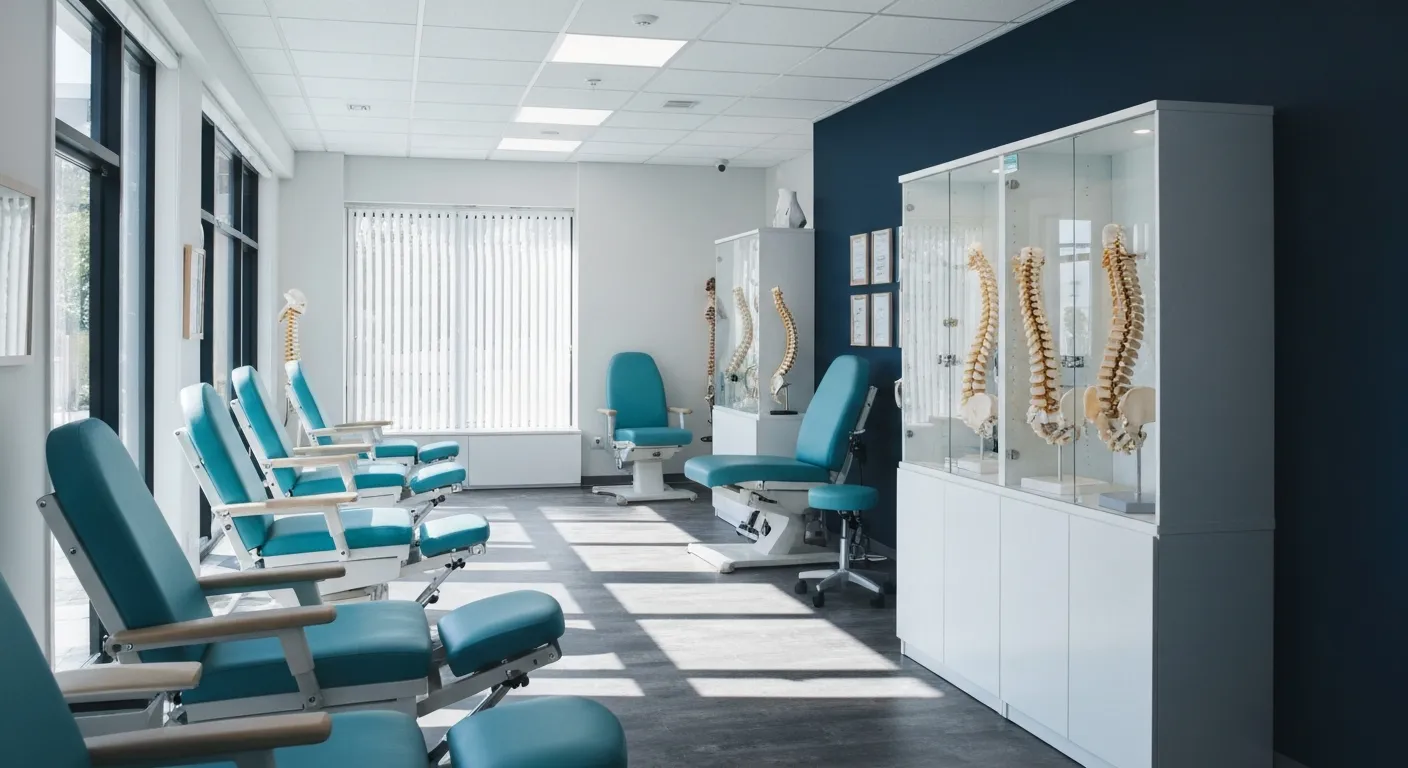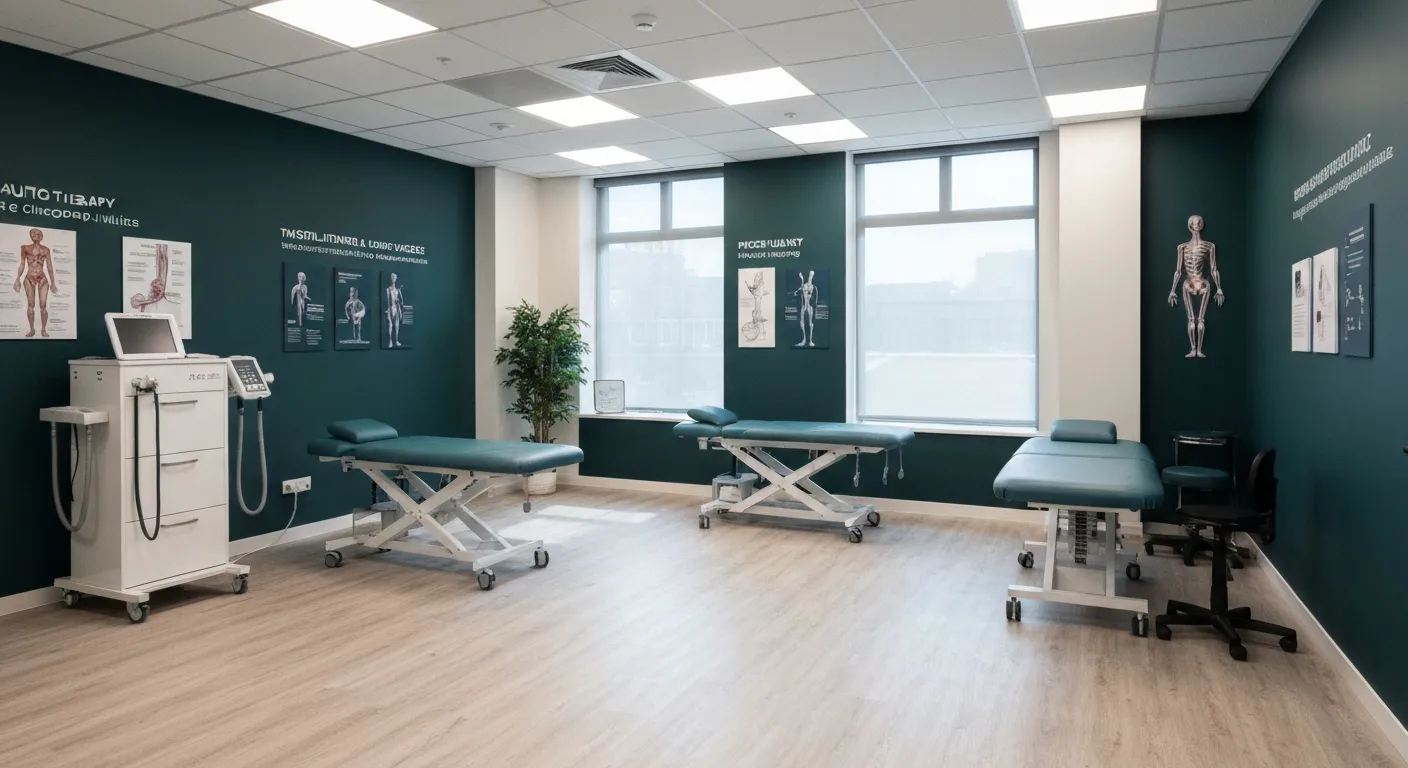Success Stories Highlighting Chiropractic's Role in Pain Recovery
October 22, 2025
10 min

Exploring the Impact of Chiropractic Care in Pain Recovery
Chronic pain affects millions worldwide, limiting mobility and diminishing quality of life. Increasingly, chiropractic care has emerged as a valuable, non-invasive treatment option that promotes healing and relief from various pain conditions. This article delves into compelling patient success stories, clinical insights, and research findings that highlight the crucial role chiropractic care plays in pain recovery across diverse populations and conditions.
Patient Experiences: Life-Changing Results Across All Ages

What kinds of success stories have patients shared about chiropractic care?
Chiropractic care has brought significant improvements in pain relief and mobility to patients across a wide age range—from children to elderly adults. People suffering from various conditions such as chronic back and neck pain, migraines, sciatica, whiplash, headaches, and even infant colic have reported life-changing chiropractic results.
Many patients have shared testimonials highlighting how chiropractic adjustments helped reduce or completely eliminate chronic pain. For example, migraine sufferers have experienced fewer headaches, while those troubled by neck or back pain have regained mobility and returned to physical activities they previously avoided.
Importantly, numerous patients have credited chiropractic care with helping them avoid surgery. Through personalized chiropractic plans focusing on spinal alignment and nerve pressure relief, patients have found natural healing and non-invasive alternatives that allowed them to live pain-free. This has been echoed by case reports and studies confirming the mild risks and high satisfaction levels associated with chiropractic therapy.
In summary, the patient stories emphasize the holistic, patient-centered approach of chiropractic care that effectively addresses a variety of musculoskeletal and neurological conditions, providing non-drug relief and improved quality of life across all ages.
Chiropractic Techniques Driving Pain Relief
What chiropractic methods contribute to pain relief?
Chiropractic care relies heavily on spinal manipulation therapy, a primary technique where controlled force is applied to spinal joints to restore proper alignment and improve motion. Other manual therapies include joint mobilization, traction, myofascial release, and massage. These approaches work together to reduce pain, decrease muscle spasms, and promote healing.
Use of advanced tools and digital imaging
Modern chiropractic clinics often utilize advanced adjustment instruments and digital imaging technologies like X-rays or MRI scans. These tools help chiropractors accurately diagnose issues, tailor treatment plans, and safely execute spinal adjustments, enhancing treatment precision and effectiveness.
Role of personalized treatment plans
Every patient receives a customized care plan based on a thorough health history, physical examinations, and diagnostic results. Plans are designed to address specific conditions and patient needs, incorporating spinal manipulation alongside education and other therapies to optimize recovery. This process highlights the importance of personalized chiropractic treatment plans.
Adjunct therapies including exercise, nutrition, and ergonomic advice
Chiropractors emphasize a holistic approach, advising patients on exercise routines that improve strength and flexibility. Nutritional guidance supports overall health and inflammation reduction. Ergonomic training teaches proper posture and body mechanics to prevent future injuries and sustain pain relief, as promoted in holistic chiropractic approaches.
These integrated chiropractic methods work together to provide non-invasive, drug-free pain relief and improved mobility, contributing to long-term wellness and reduced dependence on medications, consistent with findings on the clinical effectiveness of chiropractic spinal manipulation.
Clinical Evidence Supporting Chiropractic Efficacy
What does clinical research indicate about the effectiveness of chiropractic spinal manipulation?
Clinical research supports spinal manipulative therapy (SMT) as an effective approach for managing non-specific neck and low back pain. Multiple studies compare SMT to other conservative treatments like standard medical care, physical therapy, and exercise, finding similar benefits in pain reduction and functional improvement. This indicates SMT can be just as beneficial as these commonly used therapies.
How does chiropractic care compare to other treatment options?
Research shows that SMT and mobilization techniques often have comparable effectiveness for spine-related pain. Studies highlight that thoracic spinal manipulation may be slightly more effective than cervical techniques for neck pain. Moreover, chiropractic care is commonly part of multimodal treatment plans that include education and exercise, helping optimize patient outcomes (comprehensive information here).
What do clinical guidelines recommend regarding chiropractic care?
Clinical practice guidelines almost universally endorse spinal manipulative therapy as part of multimodal management strategies for both acute and chronic spine pain. These recommendations emphasize combining SMT with patient education and exercise interventions to maximize treatment effectiveness and sustain wellness (detailed guidelines.
Are there needs for further research in this area?
Despite positive outcomes, the evidence quality comparing SMT to placebo or no treatment is limited, leaving some uncertainty about its specific efficacy. There is an ongoing need for higher-quality studies with better placebo controls to strengthen the evidence. Future research also focuses on identifying patient subgroups most likely to benefit and understanding biomechanical predictors of positive responses (read more.
Conditions Benefiting from Chiropractic Intervention

What range of medical conditions has chiropractic care successfully addressed?
Chiropractic treatment has proven effective across a wide spectrum of health issues. It is commonly used for musculoskeletal conditions such as back pain, neck pain, headaches , migraines, and sciatica. Patients also report relief from whiplash and injuries sustained in accidents, enhancing both pain control and mobility.
Musculoskeletal conditions treated
Chiropractic care primarily focuses on the spine and joints, utilizing spinal manipulation and other manual therapies to reduce inflammation, relieve nerve pressure, and restore proper alignment. This often results in decreased muscle spasms and improved range of motion, benefiting those with joint dysfunction and arthritis.
Neurological symptom management
Beyond musculoskeletal issues, chiropractic interventions have helped manage neurological symptoms. Success stories include reduced vertigo and tinnitus in Meniere’s disease patients, alleviation of migraine frequency and severity, and improvements in balance and sensory functions after concussions. Remarkably, cases show chiropractic care aiding neurological development and gait improvements in children with cerebral palsy (Neurologic Chiropractic Success Stories).
Recovery from injuries and post-surgical rehabilitation
Patients recovering from surgeries or injuries, including spinal stenosis and mild traumatic brain injuries, have reported improved function and pain relief. Chiropractic treatment often complements conventional therapies, promoting faster healing and reducing medication dependence (Chiropractic referral for Pancoast tumors).
Success in less common conditions like infant colic, Meniere’s disease, and cerebral palsy
Chiropractic care also extends to special populations and conditions. For infants, gentle chiropractic methods have eased colic symptoms (Infant colic chiropractic care. Individuals with Meniere’s disease experienced life-changing reductions in vertigo and hearing problems after upper cervical adjustments (Chiropractic care for Meniere’s disease). Further, intensive chiropractic interventions have helped children with cerebral palsy achieve more typical gait patterns and better balance.
These diverse successes highlight chiropractic care's adaptability to various health needs, making it a valuable part of holistic healthcare.
Patient-Centric Approach and Holistic Wellness

How do chiropractors ensure personalized and holistic care for patients?
Chiropractors prioritize individualized treatment by conducting thorough health histories, physical examinations, and diagnostic imaging to understand each patient's unique condition. They then create tailored care plans that address specific needs, incorporating manual therapies like spinal manipulation and joint mobilization alongside education about posture, biomechanics, and safe movement.
Education is a cornerstone of chiropractic care. Patients receive guidance on proper ergonomics, exercise routines, and lifestyle adjustments that support healing and prevent future issues. This ongoing education fosters patient engagement and encourages adherence to treatment protocols, as seen in many Chiropractic pain relief success stories.
The holistic approach extends beyond manual adjustments. Many chiropractors integrate nutritional counseling, recommending diet improvements that reduce inflammation and promote overall health. Exercise programs and lifestyle modifications are emphasized to enhance mobility, build strength, and maintain long-term wellness, which contributes to long-term pain relief chiropractic cases.
Building enduring patient relationships is key to sustained health improvements. Regular follow-ups, wellness check-ups, and open communication create trust, allowing care plans to evolve with patient progress and changing needs, reflecting the patient-centric chiropractic practices approach.
This comprehensive model not only targets pain relief but also supports overall body function and quality of life, reinforcing chiropractic care as a patient-centered and multifaceted approach to health as demonstrated in numerous Chiropractic success stories.
Safety and Risks in Chiropractic Care

What are the safety considerations associated with chiropractic treatment?
Chiropractic care is widely considered safe when administered by trained and licensed practitioners. These professionals conduct thorough assessments, including health histories, physical exams, and diagnostic tools like X-rays or MRI scans, to identify any risks before treatment. Proper patient evaluation helps in customizing safe and effective treatment plans (Chiropractic adjustments, Licensed chiropractic care).
Rare but serious risks and their mitigation
Though uncommon, serious complications such as herniated discs, nerve compression, or stroke after neck adjustments have been reported. These risks are extremely rare and can be minimized by ensuring treatments are performed by qualified chiropractors who follow strict safety protocols and screening procedures (Risks of neck spinal manipulation, Safety of chiropractic procedures). The use of careful technique and avoiding high-risk patients lowers the incidence of adverse effects (Spinal manipulation side effects).
Importance of qualified practitioners and assessments
Choosing licensed and experienced chiropractors is crucial for safety. Qualified practitioners utilize comprehensive assessments to determine the suitability of chiropractic adjustments, factoring in a patient’s medical history and specific condition (Licensed chiropractor, Clinical practice guidelines for SMT. These steps are essential to make chiropractic care both effective and safe (Personalized chiropractic treatment plans).
Common minor post-treatment effects
Patients may experience minor side effects such as mild soreness, fatigue, or headaches after treatments. These symptoms are usually temporary and resolve within a few days (Temporary soreness after adjustment, Post-treatment effects of chiropractic adjustment. Chiropractors often provide guidance on managing these effects to ensure patient comfort during recovery (Patient education on chiropractic care.
This cautious approach allows chiropractic care to remain a low-risk, non-invasive option for pain relief and mobility improvement (Pain relief through chiropractic care, Improved mobility with chiropractic treatment.
Collaboration and Integration in Pain Management

How does chiropractic care integrate with other medical treatments for pain management?
Chiropractic care plays a vital role in a multidisciplinary approach to pain management. It works alongside medical professionals and physical therapists to offer complementary, non-invasive treatments that focus on spinal alignment and improving neuromuscular function. This holistic cooperation helps create comprehensive treatment strategies tailored to patients' unique needs.
One significant benefit of integrating chiropractic care is the reduction in reliance on pain medications, especially opioids. Studies show that patients who receive chiropractic treatment for low back pain often have a much lower likelihood of using opioid prescriptions compared to those who do not. This reduction supports safer pain management alternatives and aligns with current healthcare guidelines promoting non-pharmacological therapies.
Chiropractors collaborate with other healthcare providers by sharing evaluation results, coordinating care plans, and incorporating exercise, education, and ergonomic advice in patient management. This team approach enhances overall patient outcomes by addressing not only symptoms but also underlying biomechanical factors contributing to pain, supporting personalized chiropractic treatment plans.
Furthermore, chiropractic care complements conventional medical care by improving function and reducing inflammation without surgery or drugs. Its inclusion in multidisciplinary programs ensures patients benefit from a balanced, integrative approach that promotes natural healing and sustained wellness.
Economic and Satisfaction Benefits of Chiropractic Care
What economic and patient satisfaction advantages are associated with chiropractic care?
Chiropractic care presents notable economic advantages by reducing overall healthcare costs compared to medical care alone. Research indicates that individuals receiving chiropractic treatment often experience shorter pain episodes and lower expenditures on health services. This is particularly evident in older Medicare patients and active-duty military personnel, who show considerable improvement in pain intensity and function.
Patients under chiropractic care report higher satisfaction levels than those receiving usual medical care. The personalized approach, which includes spinal manipulative therapy and additional manual treatments, contributes to better patient experiences and outcomes.
A significant benefit of chiropractic care is the reduction in medication use, especially opioids. Studies reveal that patients who seek chiropractic care first have a much lower likelihood of using opioids, supporting the role of chiropractic methods as effective, drug-free pain management alternatives.
Improved outcomes have been notably documented in military members and older adults, showing moderate to significant pain relief and enhanced mobility with chiropractic intervention. These findings endorse chiropractic care as a cost-efficient, patient-preferred option that promotes better health results across diverse populations.
Future Directions and Research Needs in Chiropractic Care
What future research and improvements are needed in chiropractic care?
Despite widespread use of spinal manipulative therapy (SMT) in chiropractic care, current evidence reflects limitations in study quality, particularly concerning placebo-controlled trials. One major challenge is developing effective placebo controls that convincingly mimic SMT without therapeutic effects, which is crucial for robust assessment of SMT's specific benefits.
Identifying patient subgroups most likely to benefit from chiropractic treatment remains a priority. Variability in response suggests factors such as biomechanical profiles, demographics, and specific conditions may influence outcomes. Research focused on these predictors aims to personalize care and optimize effectiveness (predictors of positive outcomes from SMT.
Mechanistic studies are also needed to clarify how SMT exerts its effects on spine structure, nerve function, and inflammation. Understanding underlying biological processes will enhance clinical rationale and guide refining treatment techniques (mechanistic studies of SMT.
To bridge research with practice, continuing education and incorporation of the latest evidence into chiropractic care are essential. This commitment helps practitioners stay current with emerging insights, improving patient outcomes and safety (patient-centric chiropractic practices, chiropractic patient education).
Overall, future investigations will advance scientific rigor, refine patient-centered approaches, and deepen understanding of chiropractic care's therapeutic mechanisms (clinical effectiveness of chiropractic spinal manipulation.
Chiropractic Care: A Vital Component in Pain Recovery
The success stories and clinical evidence collectively affirm chiropractic care as a safe, effective, and holistic option for managing various pain conditions. By offering tailored treatments that restore alignment, reduce inflammation, and enhance mobility, chiropractic care empowers patients to reclaim active, pain-free lives. Its integration with other health disciplines further broadens its impact, positioning chiropractic care as an essential pillar in modern pain management and recovery strategies.
Recent articles

Long-Term Pain Relief Through Targeted Corrective Exercises

10 Benefits of Integrating Physiotherapy with Chiropractic Treatments

Corrective Exercises That Help Prevent Recurring Pain

8 Corrective Exercises Proven for Lasting Pain Relief

Lifestyle Habits for Maintaining a Healthy Spine

What You Will Experience at Your Initial Chiropractic Visit

What Happens at Your First Visit to a Chiropractor?

Focusing on Root Cause Analysis for Effective Pain Relief

Tips for Lifestyle Changes to Support Spinal Health

Holistic Treatment Plans: Alternatives to Surgery for Chronic Pain

Enhance Wellness Through Personalized Nutritional Counseling

Non-Invasive Pain Relief: Exploring Holistic Treatment Alternatives

Sciatica Relief Through Targeted Spinal Decompression

Integrating Physiotherapy with Chiropractic Treatments for Better Results

Testimonials That Demonstrate the Benefits of Chiropractic Care

The Power of Corrective Exercises in Pain Management

A Step-by-Step Guide to Your Initial Chiropractic Consultation

9 Nutritional Tips to Enhance Your Chiropractic Wellness Journey

Patient Experiences: How Chiropractic Care Changed Their Lives

Lifestyle Recommendations to Keep Your Spine in Top Shape

Effective Corrective Exercises for Long-Term Pain Relief

Back Pain Benefits: What Chiropractic Care Can Do for You

Spinal Decompression Techniques for Effective Sciatica Relief

Top Nutritional Counseling Tips for Enhanced Wellness

6 Lifestyle Habits That Boost Spine Health Daily

Discover Holistic and Non-Surgical Pain Relief Solutions

Exploring Holistic and Non-Surgical Treatment Options for Pain

The Role of Physiotherapy in Enhancing Chiropractic Care Outcomes

Complementing Chiropractic Care with Physiotherapy: What You Need to Know

What to Expect During Your First Chiropractic Visit

Simple Lifestyle Adjustments to Maintain a Healthy Spine

Personalized Nutritional Counseling for Improved Health Outcomes

Exploring Non-Surgical Treatments for Spine-Related Conditions

An Introduction to Spinal Decompression for Sciatica Patients

Transformative Success Stories: Patient Experiences with Chiropractic Treatments

Why Chiropractic Care Is Essential for Back Pain Relief

Addressing Underlying Causes Versus Symptom Management in Pain Care

The Role of Nutrition in Enhancing Chiropractic Treatment Effectiveness

Sciatica Treatment Options: Is Spinal Decompression Right for You?

Lifestyle Tips to Maintain a Healthy Spine and Prevent Back Issues

The Synergy Between Physiotherapy and Chiropractic Treatments

What Happens During Your Initial Chiropractic Consultation

Effective Corrective Exercises for Sustainable Pain Management

Taking a Root Cause Approach to Chronic Pain Management

Holistic Pain Management Techniques Without Surgery

How Patient Success Stories Validate Chiropractic Care Benefits

Spinal Decompression: Innovative Treatment for Sciatic Nerve Pain

Spinal Decompression Therapy: A Non-Invasive Approach to Sciatica Relief

Exploring Holistic Approaches Beyond Surgery for Pain Relief

Practical Lifestyle Advice to Support a Healthy Spine Every Day

Corrective Exercise Routines Designed for Long-Term Pain Prevention

Real Patient Stories: Overcoming Chronic Pain with Chiropractic Care

Lifestyle Changes That Promote a Healthy Spine and Prevent Injury

How Addressing the Root Cause of Pain Leads to Lasting Relief

Non-Surgical Holistic Therapies to Manage Chronic Pain Effectively

Nutritional Counseling's Impact on Physical Health and Healing

Benefits of Regular Chiropractic Care for a Stronger Back

Your First Chiropractic Visit: What to Expect and How to Prepare

Patient Experiences: How Chiropractic Care Transformed Their Lives

Exploring Holistic, Non-Surgical Options for Pain Management

Combining Physiotherapy with Chiropractic Treatments for Enhanced Recovery

Holistic Treatments That Offer Alternatives to Surgery for Pain Relief

Corrective Exercise Strategies for Long-Term Spine Health

How Physiotherapy Complements Chiropractic Adjustments for Better Outcomes

First-Time Chiropractic Visitors: What You Should Know

Understanding the Importance of Treating Pain at Its Source

Adopting Lifestyle Changes to Support Your Spine's Wellness

Utilizing Physiotherapy to Enhance Chiropractic Treatment Outcomes

The Key Advantages of Chiropractic Care for Back Pain Sufferers

Why Focusing on Root Causes Improves Pain Treatment Success

Corrective Exercises That Promote Lasting Pain Relief and Mobility

Sciatica Relief Through Targeted Spinal Decompression Techniques

Preparing for Your First Chiropractic Appointment with Confidence

Healthy Lifestyle Habits for Maintaining Spinal Alignment

Success Stories Highlighting Chiropractic's Role in Pain Recovery

Top Benefits of Chiropractic Care for Chronic Back Pain

Nutrition Tips to Boost Your Overall Wellness and Recovery

How Chiropractic Care Alleviates Back Pain Naturally

How Nutritional Counseling Supports Overall Wellness and Spine Health

Step-by-Step Guide to Your First Visit with a Chiropractor

Using Nutrition to Support Chiropractic and Overall Wellness

Integrating Physiotherapy in Your Chiropractic Healing Journey

How Physiotherapy Complements Chiropractic Adjustments for Faster Healing

Lifestyle Tips for Maintaining a Healthy Spine and Preventing Back Pain

Heartwarming Patient Testimonials Highlighting Chiropractic Success

How Proper Nutrition Supports Chiropractic and Physiotherapy Treatments

Combining Physiotherapy and Chiropractic Treatments for Optimal Recovery

Why Chiropractic Treatments Are Effective for Managing Back Pain

Choosing a Chiropractor: Tips for Finding a Trusted Provider

Integrating Physiotherapy and Chiropractic: Benefits and What to Expect

How Tailored Corrective Exercises Can Aid in Pain Management

Chiropractic Care: A Proven Solution for Alleviating Back Pain

What to Expect at Your First Chiropractic Visit: A Comprehensive Guide

The Importance of Root Cause Analysis in Effective Pain Management

The Role of Corrective Exercises in Sustaining Pain-Free Living

Combining Chiropractic and Physiotherapy for Comprehensive Pain Relief

How Addressing Underlying Causes Improves Pain Treatment Effectiveness

Maintaining Spinal Health Through Lifestyle Changes and Preventive Care

Understanding the Benefits of Chiropractic Adjustments for Back Pain Sufferers

